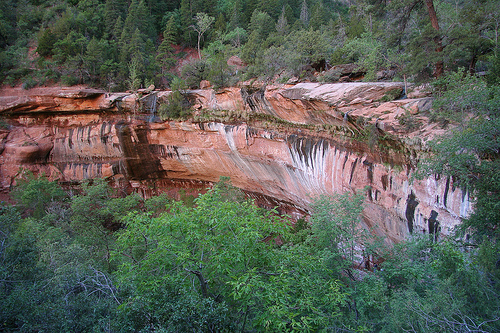December 24, 2011


One culprit is causing nearly a third of the waste in our national parks. It’s something you might grab for a long hike, or camping, or washing down a meal cooked over the campfire. It comes in a convenient yet remarkably wasteful package, and it’s become an unlikely source of controversy. (Photo by Zanus Tungare, Flickr)
[nggallery id=80 template=carousel images=4][imagebrowser id=80] UPDATE February 8, 2012: Sierra Club Green Home was pleased to learn that a new ban on the sale of plastic water bottles in the Grand Canyon will go into effect by early March of this year. However, retailers will still be able to sell juice and soda in plastic bottles, and visitors will still be able to bring plastic bottles with them. Hopefully the ban will raise awareness of the plastic waste problem, and encourage visitors to be gentle on the Earth by choosing reusable. By Debra Atlas December 24, 2011 One culprit is causing nearly a third of the waste in our national parks. It’s something you might grab for a long hike, or camping, or washing down a meal cooked over the campfire. It comes in a convenient-yet-remarkably-wasteful package, and it’s become an unlikely source of controversy. That culprit is bottled water, as Sierra Club Green Home was surprised to learn.
Shawn Norton, who works on climate change and sustainability issues for the National Park Service, says in a January 2010 internal memo that banning disposable bottles would reduce waste, cut recycling costs, and save electricity. In fact, if just 15 parks (including Grand Canyon, Yellowstone, Death Valley and Grand Teton) banned bottled water, the savings could be 18 million kilowatt hours per year!
So using alternatives to disposable water bottles should be a no-brainer for an organization preserving natural spaces, like the National Park Service, right?
Wrong. Despite the waste these bottles generate, and the threat discarded plastic poses to wildlife, National Park Service Director Jon Jarvis has balked at any change.
Grand Canyon National Park was about to institute a plastic water bottle ban last year when Jarvis nixed it at the last minute. This caused quite an uproar, especially after Jarvis stated in an email obtained by Public Employees for Environmental Responsibility through a Freedom of Information Act request that while he supported the ban, “there are going to be consequences, since Coke is a major sponsor of our recycling efforts.”
Shortly after this email was exposed, 5 Gyres organized a petition through Change.org, and more than 94,000 people signed on in support of a ban. Jarvis, however, seems to have only become more obstinate.
This week he announced that any national park trying to implement a disposable bottle ban must comply with a detailed checklist and provide written reports showing the amount of waste to be eliminated, and how concessionaires’ revenues will be affected. Parks considering a ban must also consult with the park service’s public health office.
“A ban could pose challenges for diabetics and others with health issues who come to a park expecting bottled water to be readily available,” says Jarvis.
As per this new policy, parks which are considering a ban will have to provide “an impact analysis that includes an assessment of the effects on visitor health and safety; submit a request in writing to their regional director and receive the approval of their regional director.”
The Grand Canyon Park already encourages park visitors to quit the disposable bottle habit and fill up at any of its dozen water stations instead. The water stations were installed at a cost of more than $300,000. The park hasn’t yet compiled data as to the success of this program.
Several parks already have plastic bottle bans in place, including Zion and Hawaii Volcanoes national parks. During 2009-2010, the ban reduced Zion National Park’s waste stream by roughly 5,000 pounds and cut energy used at the visitor center by 10 percent. However, the park’s concessionaire, Xanterra Parks & Resorts, lost $25,000 in 2009-2010.
This does not mean that profits will inevitably suffer after a ban. The concessionaire association that used to sell disposable water bottles at Hawaii Volcano National Park sold reusable bottles instead, and raked in $80,000 and a net profit.
While the right choice for the environment is clear, the issue of throw away bottles has become bogged down in bureaucracy and politics. Grab your reusable water bottle the next time you explore the outdoors, and let’s hope that the national park system can keep up with you!
Check out more articles by Debra Atlas.
© 2011 SCGH, LLC.]]>